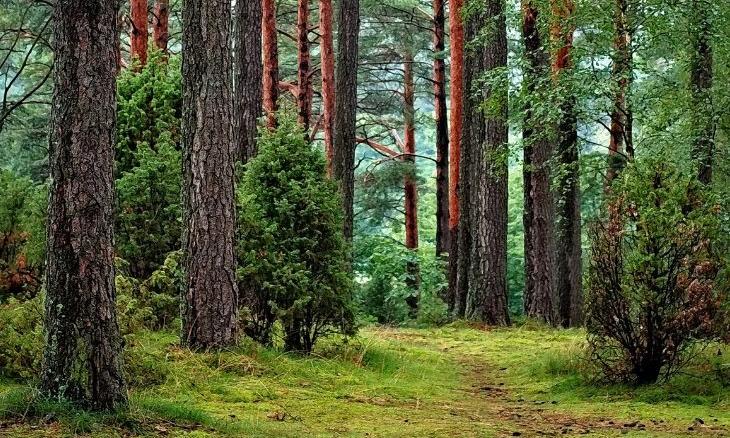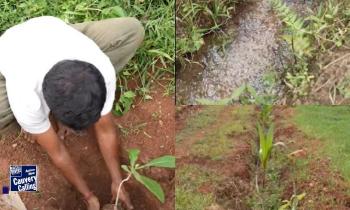Agroforestry: Building Health and Wealth of the Community and Environment
There is a huge untapped global and domestic market for Indian fruits which can become a jackpot for our farmers if we focus on agroforestry for the next few years, says Pravesh Sharma

India exports 1% of the fruits we grow. Thailand exports 30% of the fruits they grow and the Philippines exports 60% -- countries that are 10 to 11 times smaller in size than India.
There is a huge untapped global and domestic market for Indian fruits which can become a jackpot for our farmers if we focus on agroforestry for the next few years and build the necessary infrastructure to establish this lucrative farming model – a model that improves both health and wealth of the community and the environment.
India’s fruit consumption is well below the prescribed international standards. One reason is that fruit is still not a dietary option for a large segment of the population. It’s mostly the middle-class and upper middle-class who consume fruits, but this should change. Farmers can not only grow fruit trees more easily than crops, they can contribute towards improving the nation’s health and wealth, and their own.
Agroforestry is an alternative to crop-based agriculture. If larger areas of river banks and basins are cultivated with trees, they will retain more water, replenish aquifers and recharge groundwater levels, thus increasing water flow levels in rivers.
Tree-based agriculture in riparian regions is the best solution to reduce water stress and revive dying rivers. Tree roots also act as natural purifiers, filtering sediment and improving the quality of water that flows into rivers and streams.
Apart from horticulture, timber trees and fodder trees also constitute agroforestry. Growing fodder trees can be an extremely lucrative proposition, because it can set off a domino effect of wealth creation for many allied industries besides greatly enriching the soil. Livestock population will automatically increase with organised fodder tree cultivation.
Today, there is a limit to the number of milch cattle a farmer can afford because of the availability (or rather non-availability) of fodder. Fewer animals means poorer soil quality. One of the best nutrients for soil is animal waste, which greatly enhances soil microbial activity, an indicator of soil health. However, with diminishing pastures and grasslands, the farmer cannot afford to maintain livestock that he can’t feed.
Fodder trees are the perfect solution. They require less acreage, less investment to grow, they will always have an expanding market and will indirectly enhance other allied industries such as milk production.
Apart from horticulture and fodder, timber trees also offer farmers a highly cost-efficient alternative to crop farming.
India imports tens of thousands of crore worth of wood every year. We have the potential to grow all that we need and enrich our farmers’ coffers and save on foreign exchange.
Similarly, statistics show that in May 2019, India imported nearly 350,000 tons of palm oil from southeast Asian countries – this is just in one month. Our southern coastal regions are highly conducive to cultivating palm. These are some of the agroforestry options that can establish thriving rural economies and generate jobs for tens of thousands of people.
If in the next 3-5 years, we can put in place a comprehensive policy ecosystem that will attract industry to invest in establishing a robust infrastructure for perishables, farmers can be convinced to partially convert to agroforestry. By the time the first yield is ready, there must be collection facilities, storage systems, transport chains, national supply chains, grading and packaging units in place so that the farmer has a ready market and can sell at competitive rates.
Industry will invest in this kind of infrastructure only if they are able to see the production potential. Information like acreage under cultivation should be shared with potential investors so they can evaluate for themselves the cost of investment and estimated return on investment. Until such transparency is built into the system and there is focused determination to move the farmers in this direction, no investor will put down money.
When agroforestry is adopted in the right combination, it can yield results in a staggered and phased manner for the farmer, thereby building his wealth gradually and steadily over the years.
Some trees can be harvested between three and five years, others in 6-7 years and yet others in 10-12 years; this will lead to the farmer having an assured asset with predictable returns which will lower input cost and increase earnings from harvest steadily.
This is the only way to incentivise farmers to move, at least partially, into agroforestry and reduce the burden on our land and water resources. There is no danger of food security with farmers moving to agroforestry for two reasons: one, we’re already producing one-and-a-half times the food grains that we need and a majority of it is going waste because we neither have the storage facilities to store them nor are we allowing export of food grains (except Basmati rice); two, farmers need not convert all their lands into agroforestry; they can convert partially in the initial years and following the first harvest of crop, can decide on further conversion.
Agroforestry is beneficial in many ways:
- It has proven to increase farmer wealth by 3-8 times in 5-7 years
- It’s good for the land as it enriches and replenishes the soil unlike crops
- It’s good for our rivers and water bodies as water requirement is not even a tenth of what crops need
- The crop is itself an insurance for the farmer due to its high-value produce and will therefore lower his dependence on loans
- It is less labour intensive than crop agriculture
- All segments of consumers will get access to high nutritional value diet
- It will create several new allied industries and generate thousands (if not millions) of jobs
- It will not only create a thriving rural economy but can also earn foreign exchange revenue for the country
Agroforestry checks all the boxes. It is now up to all stakeholders to come together and work towards making this a reality by offering the right incentives, building the necessary infrastructure and creating mass awareness among farmer communities that the goose with the golden eggs is roaming unnoticed in their backyards.
(The writer, Pravesh Sharma, is a retired IAS officer and led a project for the formation FPOs across the country. He is also on the Board of Rally for Rivers. He can be reached at pravesh_sharma@rediffmail.com. Views are personal)











